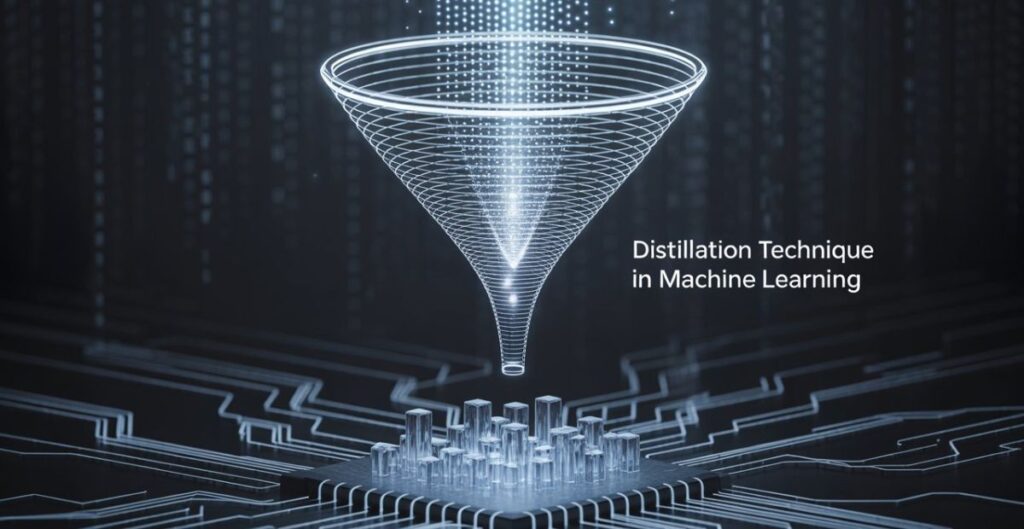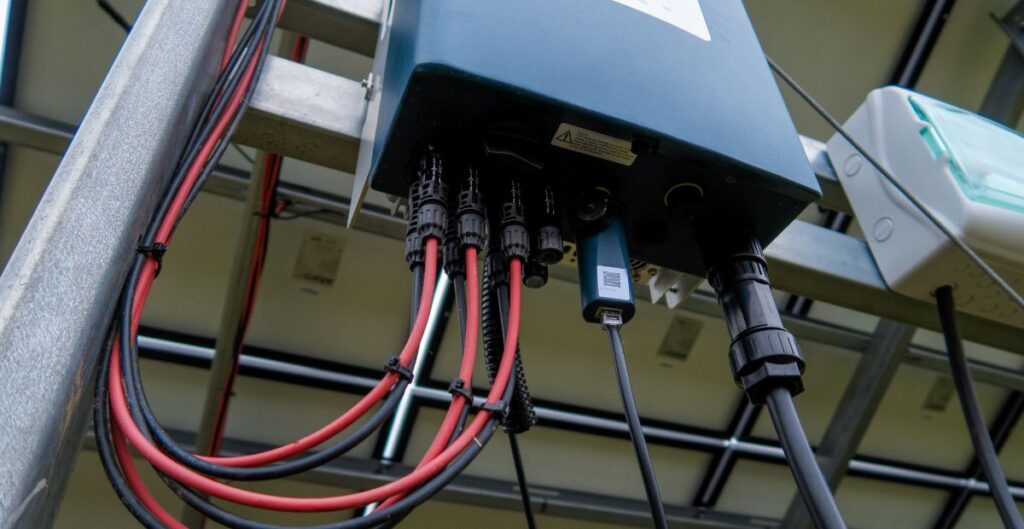Have you ever wondered how big AI models like BERT or GPT can be made smaller and faster without losing their brainpower? That’s where the distillation technique in machine learning comes in. It helps reduce the size of complex models so they can work easily on phones, tablets, and other small devices.
In simple words, it’s like a smart student learning from a wise teacher. The student becomes almost as good, but lighter and faster. In this article, you’ll learn what the distillation technique in machine learning really means, how it works, and why it’s so useful in the world of AI.
- Why Use Distillation Key Benefits and Purpose
- How Knowledge Distillation Works Teacher-Student Paradigm
- Types of Knowledge Distillation Techniques
- Training Methods in Knowledge Distillation
- Popular Knowledge Distillation Algorithms
- Knowledge Distillation vs Other Compression Methods
- Loss Functions Used in Knowledge Distillation
- Real-World Use Cases of Knowledge Distillation
- Challenges and Limitations of Model Distillation
- Final Thoughts Is Knowledge Distillation Worth It
- Frequently Asked Questions (FAQ)
Why Use Distillation Key Benefits and Purpose
Knowledge distillation helps in many ways:
- Smaller Model Size: It uses less memory and storage.
- Faster Inference: It gives quicker results, which is great for mobile apps or real-time tools.
- Works on Edge Devices: Devices like smartphones or smart speakers can run distilled models easily.
Overall, it helps developers balance performance and efficiency, especially when computing resources are limited.
How Knowledge Distillation Works Teacher-Student Paradigm
In knowledge distillation, we use two models:
- Teacher Model: A large, accurate model that’s already trained.
- Student Model: A smaller model that learns by mimicking the teacher.
The teacher provides “soft answers” (called soft targets), not just right or wrong. For example, it may say a picture is 80% cat and 20% dog instead of just “cat.” This extra information helps the student learn better.
Terms like softmax temperature and distillation loss are used to make learning smoother for the student model.
Types of Knowledge Distillation Techniques
Response-based Distillation
The student learns from the final output (called logits) of the teacher model. This is the most common and easiest method.
Feature-based Distillation
Here, the student learns from the internal layers of the teacher. It’s like watching how the teacher solves each step of a problem.
Relation-based Distillation
This method teaches the student how the teacher relates different pieces of data together. It’s useful in tasks like comparing images or understanding word meanings.
Training Methods in Knowledge Distillation
Offline Distillation
The teacher is trained first. Then the student learns from its outputs. It’s stable and commonly used in many machine learning projects.
Online Distillation
Both the teacher and student models are trained at the same time. This can be useful when lots of data is available.
Self-Distillation
A model teaches itself using its own earlier predictions. This helps improve accuracy without needing a second model.
Popular Knowledge Distillation Algorithms
Adversarial Distillation
A third model checks if the student is doing well by comparing it with the teacher. This is a bit more advanced.
Multi-Teacher Distillation
Here, the student learns from multiple teacher models. It can learn different ways to solve a problem.
Cross-Modal Distillation
This is used when the teacher works with one kind of data (like images), and the student works with another (like text).
Knowledge Distillation vs Other Compression Methods
Model Distillation vs Quantization
Distillation teaches the model to think smarter. Quantization reduces the size by using smaller numbers. Distilled models often keep higher accuracy.
Knowledge Distillation vs Transfer Learning
Transfer learning moves knowledge to a different task. Distillation teaches a smaller model to do the same task. Both save time but are used differently.
Loss Functions Used in Knowledge Distillation
To train the student model, we compare its results to the teacher’s soft labels. This is done using distillation loss, like KL Divergence. A softmax temperature is used to make the learning smoother and help the student understand better.
Tools like PyTorch and TensorFlow help manage these losses using built-in functions like CrossEntropyLoss and label smoothing.
Real-World Use Cases of Knowledge Distillation
Knowledge distillation is used in:
- NLP Tasks: Models like DistilBERT help with text tasks like sentiment analysis.
- Vision Models: Smaller versions of Vision Transformers (ViT) or MobileNet are used in mobile image recognition.
- Smart Devices: AI models in phones, smart speakers, and robots use distilled models for fast processing.
- Cloud to Device Deployment: Distilled models are easier to run on devices with limited resources using formats like ONNX.
Challenges and Limitations of Model Distillation
Here are some common challenges:
- The student might overfit if it copies the teacher too closely.
- If the teacher is weak, the student will also perform poorly.
- Sometimes accuracy drops slightly compared to the larger model.
These issues can be handled by reviewing data, testing results, and sometimes using human-in-the-loop feedback.
Final Thoughts Is Knowledge Distillation Worth It
Yes! Distillation helps make AI models faster and lighter without losing much accuracy. It brings powerful AI to devices we use every day — from mobile phones to classroom apps.
As large models like Google Gemini and GPT-4 continue to grow, distillation helps bring their power to more users without needing high-end machines.
Frequently Asked Questions (FAQ)
What is distillation in machine learning
It’s a way to train a small model by copying a larger, smarter one. The small model becomes faster and uses less memory.
What is the distillation of an AI model
It means shrinking a big model into a smaller version by teaching it to follow the same steps and decisions.
What is the difference between distillation and quantization
Distillation teaches the model to be smart. Quantization just compresses its numbers. Distilled models usually stay more accurate.
How does knowledge distillation help in real life
It allows smart AI to run on phones, smart cameras, and apps where space and speed are limited.
What’s the difference between knowledge transfer and distillation
Knowledge transfer moves learning to a new task. Distillation sticks with the same task but makes a smaller model.
Can small models be as smart as big ones with distillation
Yes. For many tasks, they come very close while being much faster and easier to use.






